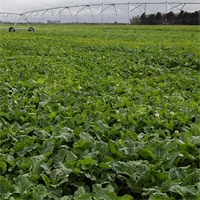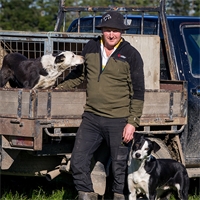04Sep
Agri-chemical update Spring 2024
Cereals
The next three months is very important in getting it right with your agri-chemical applications to maximise your quality and yield in these crops. These crops are all at different growth stages or have yet to be planted so timing of agrichemical applications is based on what growth stage the crop is at as well as what weed, and disease pressure is happening now and in the future. With disease, it is often better to look at a programme to prevent it rather than apply fungicide once disease is seen. it is often too late at this stage as the damage has already been done and yield is affected.
Basic programme for Autumn sown wheat is as follows.
This year most autumn sown crops are well advanced and are at GS (growth stage) 20 or later. By this stage the seed treatment has run out and an insecticide should have been applied along with an early fungicide and relevant herbicide if necessary.
This is a good time to apply a foliar fertiliser such as Wuxal Grano or Headland Multiple Pro. Mid Canterbury has known areas of zinc, copper, and manganese deficiency and this are ideal products to help reduce these problems. Also, with the colder weather these products are a good pick me up for the crop.
If controlling brome grass the 2nd Rexade spray needs to be applied. The 1st Rexade spray should have been applied at around GS 13-14.
At GS 30-31 a PGR (Plant growth regulator) is applied along with a triazole fungicide. If not using Rexade a wild oat spray will be needed to be used as well. Plant growth regulators are used to control stem length to prevent lodging.
At GS 32-33 further fungicide is applies. Choice of fungicide depends on the weather conditions and whether Septoria is present or not. If it is wet and or Septoria is present a SDHI fungicide will need to be used. If no Septoria present and it is dry other cheaper fungicides can be used. Remember Septoria has a relatively long latent period of 14-42 days depending on temperature. This means that the crop will be infected well before signs of infection are visible so often a preventative approach is best rather than waiting for the disease to appear and then try and cure it. At GS 39 flag leaf fungicide is applied. It is important that the flag leaf is protected as a lot of the potential yield comes from this time. Normally a SDHI fungicide is used at this stage. SDHI fungicides are used to control Septoria as Septoria is resistant to some other fungicides, but they need to be used with a triazole fungicide to help prevent further resistance. There are plenty of fungicides available. Talk with your rep to see if these will fit into your programme.
Spring sown wheat will be planted over the next few weeks. A pre-emergence herbicide is not normally used but once the crop has emerged an insecticide is normally needed to control aphids to prevent BYD virus. Once the crop reaches growth stage 20 a similar programme is followed as above but the crop will move through the growth stages a lot quicker.
Autumn sown, and spring sown barley have a similar programme to wheat but using the relevant herbicides, insecticides, fungicides and PGRs suitable for barley.
For full programmes please talk to your Ruralco representative.
Ryegrass
Ryegrass seed crops will currently be being grazed. If crops are unable to be grazed, they will be mown. Once this has been done, they are closed (no more stock on them until after harvest.) Closing date depends on the variety flowering date. This takes place from late September onwards. At GS 32 a PGR is sprayed on to stop lodging. Once the ear starts emerging a fungicide programme is started. Late weeds also can be controlled at this time.
For a Full programme please talk to your Ruralco representative.
White Clover
Once the white clover has emerged it is a matter of controlling weeds. What is used is based on what growth stage the clover plant is as well as the previous weed history of the paddock and what weeds are present. Please contact your Ruralco representative for what options are available.
Fodder Beet
Sowing time for this crop is approaching fast. For a high yielding crop, good weed control is essential.
If possible, the use of the stale seedbed technique before planting is a good idea. Poor plant numbers mean a reduction in yield so for good germination of fodder beet a good seedbed is essential. Once the crop is planted a pre- emergence herbicide is used normally 2lt/ha ethofumesate and 150 ml /ha of clomazone as well as an insecticide such as Attack or Kensban. Once the fodder beet has emerged an early post emergence spray is applied as well as another insecticide. For further information on growing fodder beet please contact your Ruralco representative.
Monitoring store grain
Monitoring grain during storage is a valuable tool in maintaining quality. This becomes more important the longer the grain remains in storage because deterioration in seed quality early in storage is slower and insects are sparse and not easily noticed. Temperature and seed moisture content are important indicators of grain quality that influence insect and mould activity. Once grain is in storage, monitoring for insects and mould once a month will give early notice of any problems occurring and action can then be taken to control these problems.
Moisture Meter Clinic
Just a reminder that Ruralco will be holding Moisture Meter Clinic is coming up in early November. Bring your moisture meter in on the day or drop it off to get it checked for the upcoming harvest season. We will communicate the date and time soon.
Related

Focusing on daily habits helps manage pressure when the going gets tough says Farmstrong ambassador ...
Read More

Ruralco’s Methven store came to fruition thanks to the confidence being experienced by the agricult...
Read More

Looking at the next 3 months regarding agrichemical sprays used on certain crops. The crops we will ...
Read More

A few things have changed since the Methven Collie Club’s first dog trial was held in August 1897. ...
Read More

Neil Bateup, has witnessed some drastic changes to his rural community over the past 30 years, chang...
Read More

Unsightly piles of used tyres that occasionally make the news with spectacular and environmentally d...
Read More